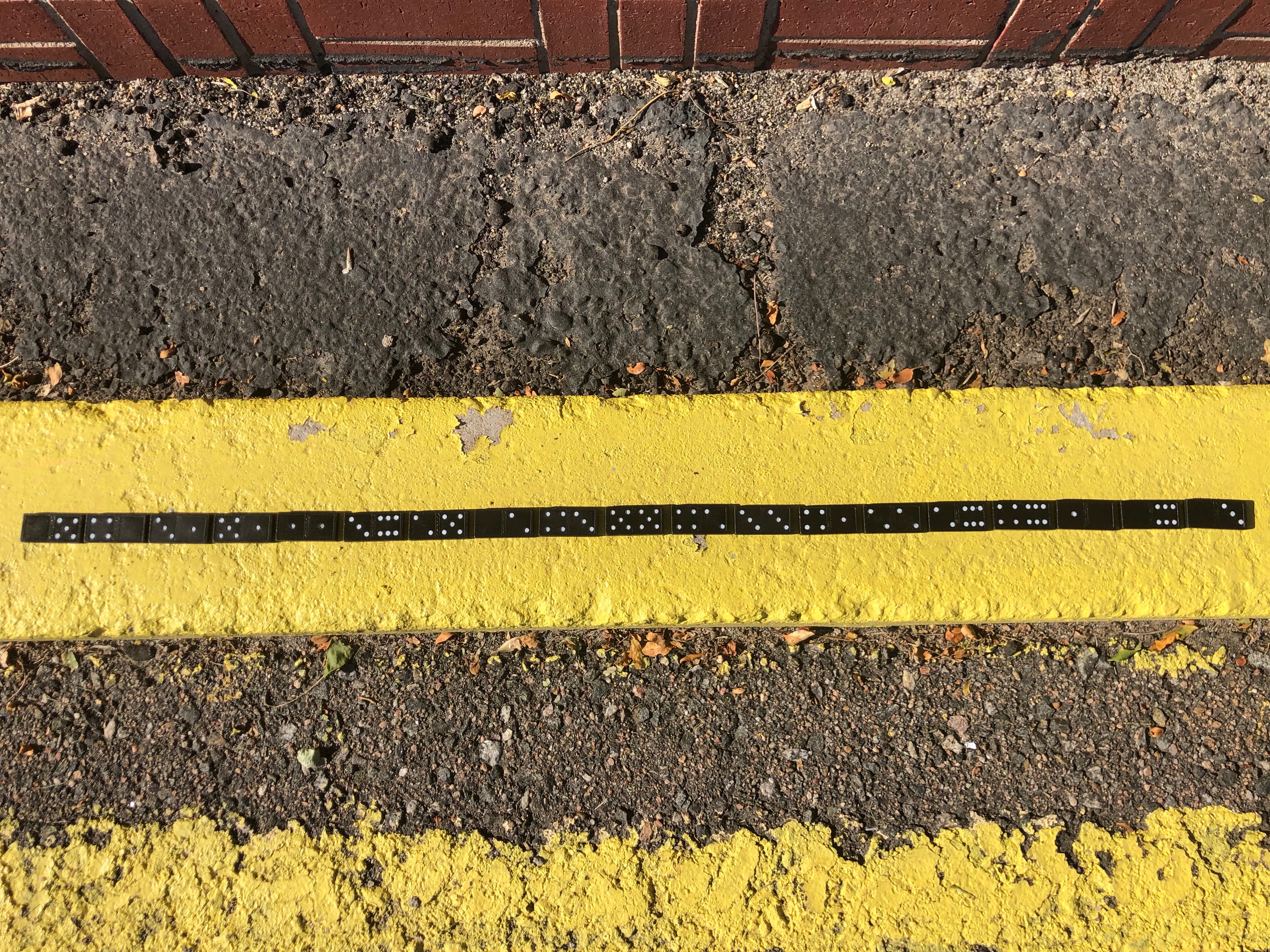Two other titles I threw around for this blog post were, Was the early Church more traditional or charismatic? and Was the Early Catholic Church as Dogmatic as the Medieval Catholic Church? This is a long blog post, but if you follow it carefully to the end, I believe you’ll be happy that you did.
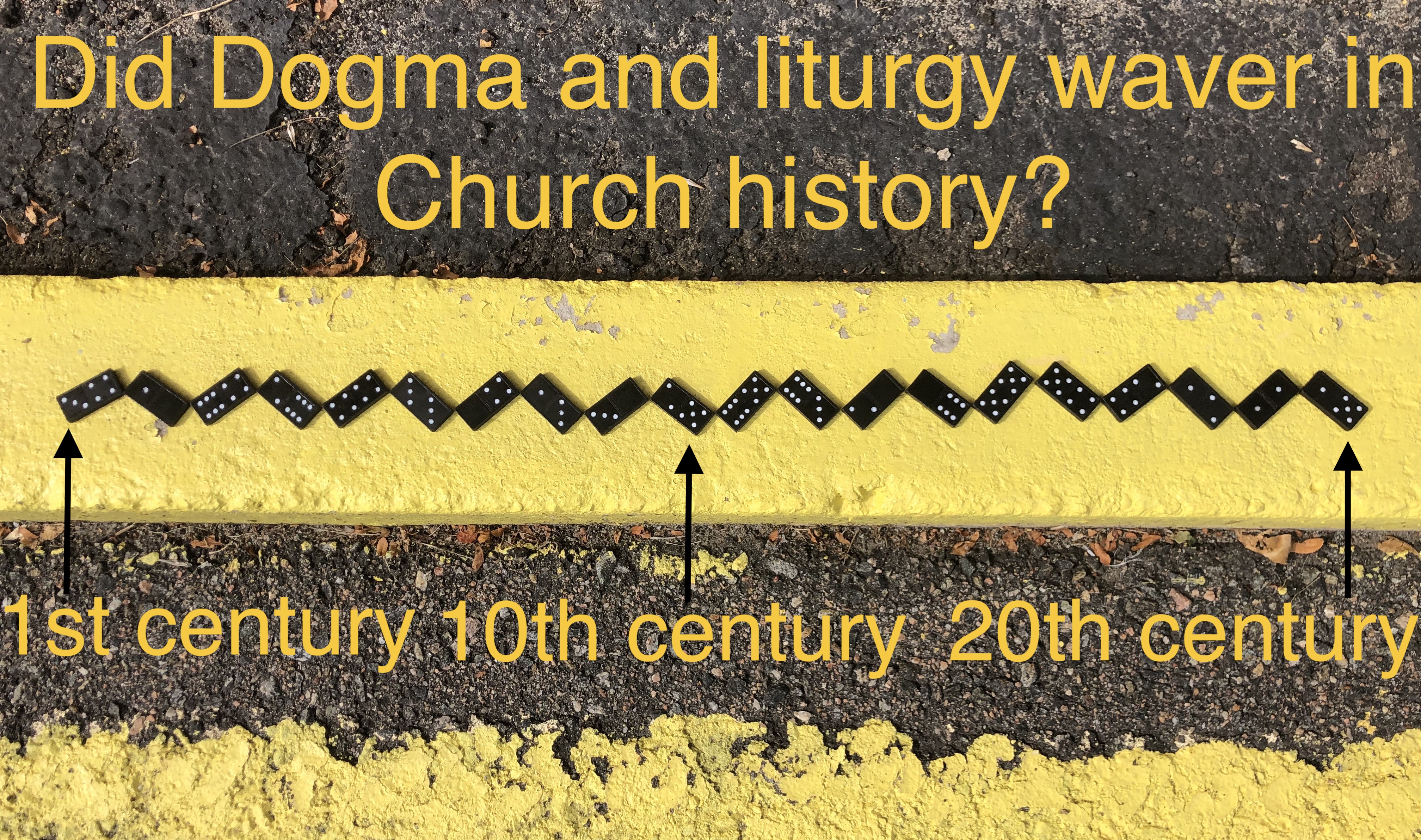
In the above picture, every domino represents a different century in Church history. I used to believe that liturgy and dogma in Catholic Church history followed an erratic pattern like the above picture of dominos, where every century differed from the next century. Where it is true that the politics of Church history have followed a pendulum from left to right and back again, dogma and liturgy have never followed such a pattern. In other words, the above is a false picture of Church history with regards to dogma and liturgy.
Dogma
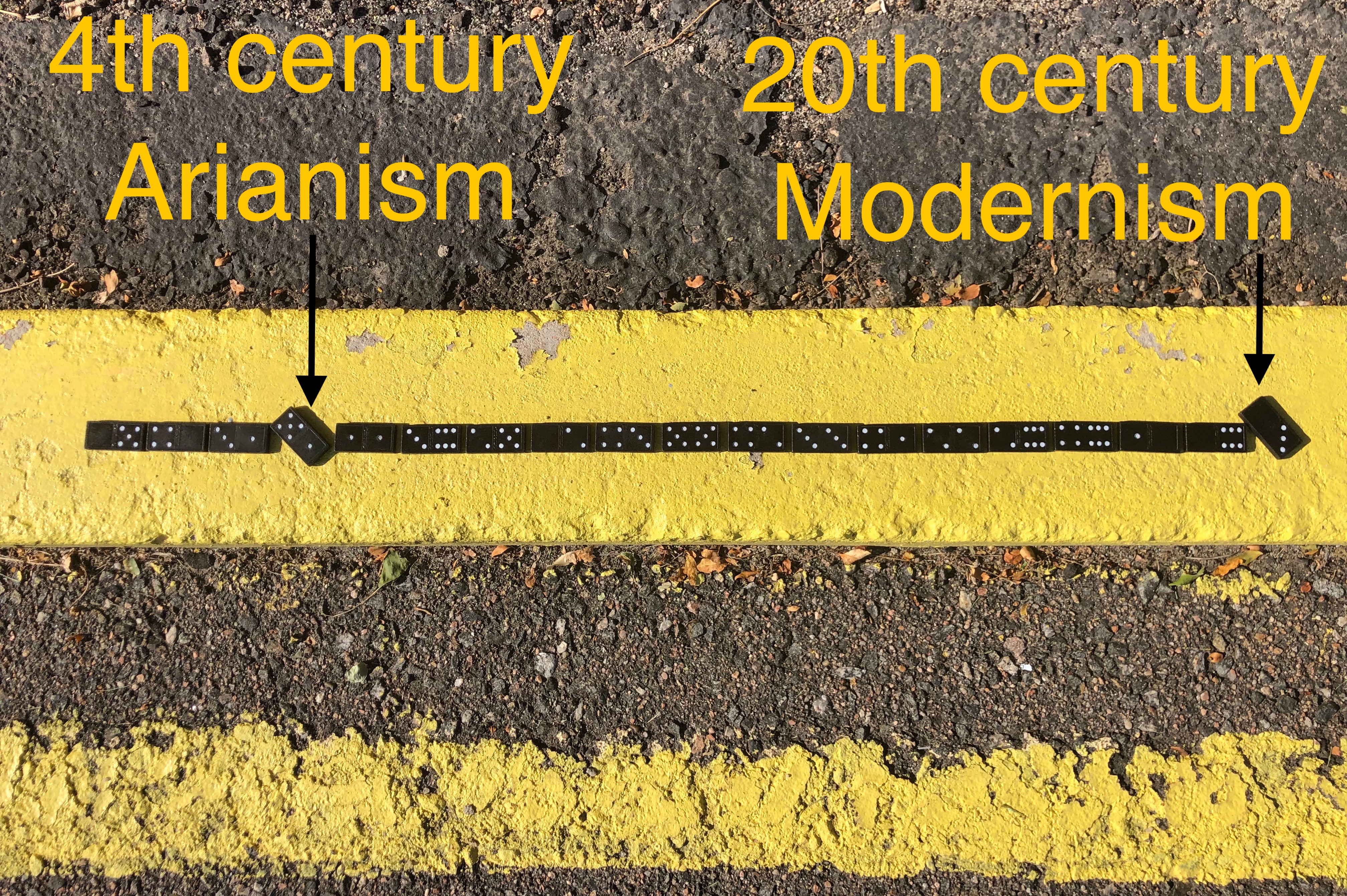
The above is a closer diagram of dogma through Church history. Everything was straight except for two centuries: Arianism (4th century, when most Catholics believed that Jesus Christ was only a creature, not the Creator) and Modernism (20th century, replacing a God-centered theology with a man-centered theology and a supernatural theology of miracles with a Christian humanism.) Granted, there were many political and moral crises in Church history (every century!) but these are the only two times (4th century and 20th/21st century) when 99% of Catholics diverted from Apostolic teachings.
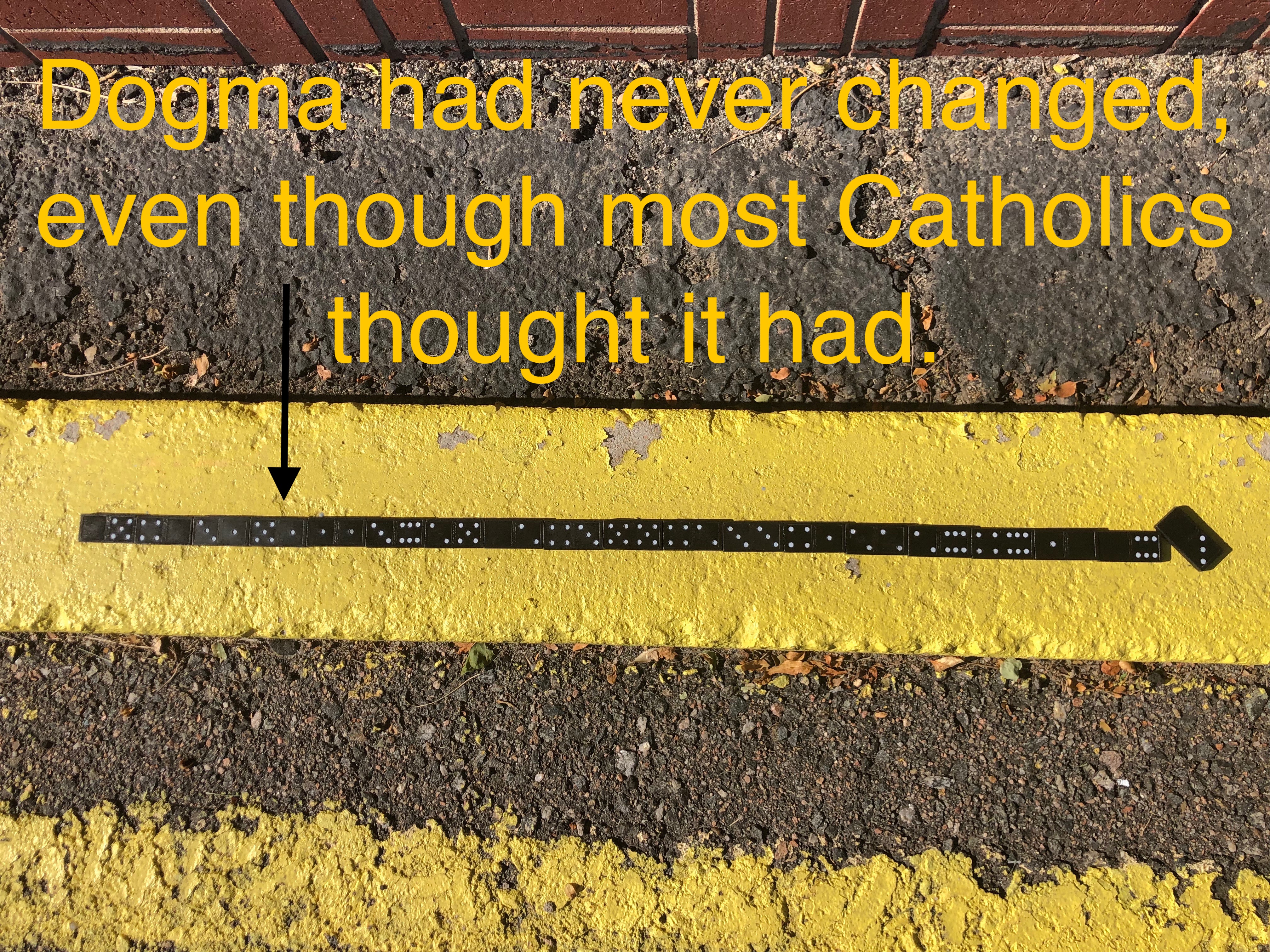
Two saintly bishops in the 4th century who asserted the Divinity of Christ, St. Athanasius and St. Hilary of Poitiers (along with some priests and lay people) got Arianism straightened out at the Council of Nicaea. Dogma had never changed, even though most Catholics thought it had. Thus, from God’s point of view, the 4th century’s crooked domino was always supposed to be straight. This means that the 20th century will be straightened out (retroactively) even if it comes at the expense of almost all modern Catholics being wrong. In the fourth century, Arian errors had infected almost all the highest authorities in the Church, and possibly the Pope. Thus, we can say that the indefectibility of the Church has nothing to do with most of God’s people going astray in an isolated time in Church history. (In fact, those isolated times of diversion from the past in the Old Testament are more of a punishment upon Israel than a renewal.)
In the 20th century, we have constant innovation. The difference (thanks to the internet and libraries) is that we can see what has been taught everywhere and at all times outside of the modernist crisis. We can see Divine Revelation in the Bible, dozens of Church Fathers, 250+ Popes and 10,000 saints and martyrs. So here’s ten random examples of dogma, liturgy, sacraments and discipline where 99% of Catholics today divert from 99% of Catholics in previous centuries:
- The Apostolic Deposit of the Faith says miracles like the Resurrection are necessary to Catholicism. Modernist heretics say miracles like the Resurrection are not necessary to Catholic belief. (Thankfully, most Catholics outside the academy still believe in the bodily resurrection of Christ.)
- The Apostolic Deposit of the Faith (and Romans 13) says that the death penalty is necessary in a fallen society. Modernists say the death penalty is wrong.
- The Apostolic Deposit of the Faith says many people go to hell. (In fact, almost every saint of every century insists that most people go to hell.) Modernists say, “Hell is a reality, but we don’t know if anyone is in hell.”
- Every Pope from 500 to 1950 was against the separation of Church and State. Modernists are for the separation of Church and State.
- The Apostolic Deposit of the Faith says only Catholicism is pleasing to God. Liberal modernists say pagan religions are pleasing to God. (Conservative-modernist-Catholics imply that only “other Christian denominations” are pleasing to God, as well as Catholicism.)
- The Apostolic Deposit of the Faith says that Christ is the only way to the Father and that any purposeful diversion from Catholicism is a diversion from Christ Himself. Modernists say other religions can be salvific, too.
- The Apostolic Deposit of the Faith says divinely revealed worship in the Mass can not change radically. Modernists say the Mass can change overnight via a pastoral council.
- The Apostolic Deposit of the Faith says mortal sins can only be forgiven in baptism or confession, not reception of Holy Communion. Modernists say “the Eucharist is for forgiveness.”
- The Apostles and the Bible say women should veil (wear a head covering) in Church (as seen in 1 Cor 11:5). Modernists say this is not only “not necessary” but “distracting.”
- Jesus Christ and the Apostles taught that “re-marriage” is a sin. Modernists believe that waving a magic canonical wand called an annulment makes “re-marriage” not a sin. 1
Now, if we were only comparing the 20th century Popes to 19th century Popes, I would say it might be hard to determine the mind of God on those ten above issues like the death penalty. I too was confused for awhile. But eventually I needed a visual to see what it looks like to have 19 centuries in one direction versus 1 century in another direction. Hence, the dominos. This shows something of the mind of God when every Pope and every saint spoke the same way from 50AD to 1950AD on tough issues like hell. So, you must admit that we are in an unprecedented Church crisis if 19 dominos point one way and our domino points another way.
Or…if you hold to any of the above ten aspects of modernism and think God is on your side for that, then you must insist on one of two things in regards to the Holy Spirit:
Either
1. The Holy Spirit changed His mind in the 20th century in regards to Christian lifestyle, politics, dogma and liturgy and in an overnight manner, infused these radical changes into the hearts of all Catholics, clergy and lay alike.
or
2. The True Faith and Liturgy of the Apostles was lost by the year 313AD and re-discovered in the 1960s by an elite group of theologians.
The problem with both of these above theses is that both essentially say the same thing: “First-century Catholics and 20th century Catholics got the Holy Spirit ‘right,’ but everyone in-between is wrong.” It is all strangely similar to the Mormon idea of the “Great Apostasy.” The “Great Apostasy,” according to Mormons, is that everyone lost the true faith from the 1st century until Joseph Smith re-discovered it in the 19th century. So, Joseph Smith, what was the Holy Spirit doing from 70AD to 1830AD?
Was Catholicism similarly lost from 62AD until 1962AD?
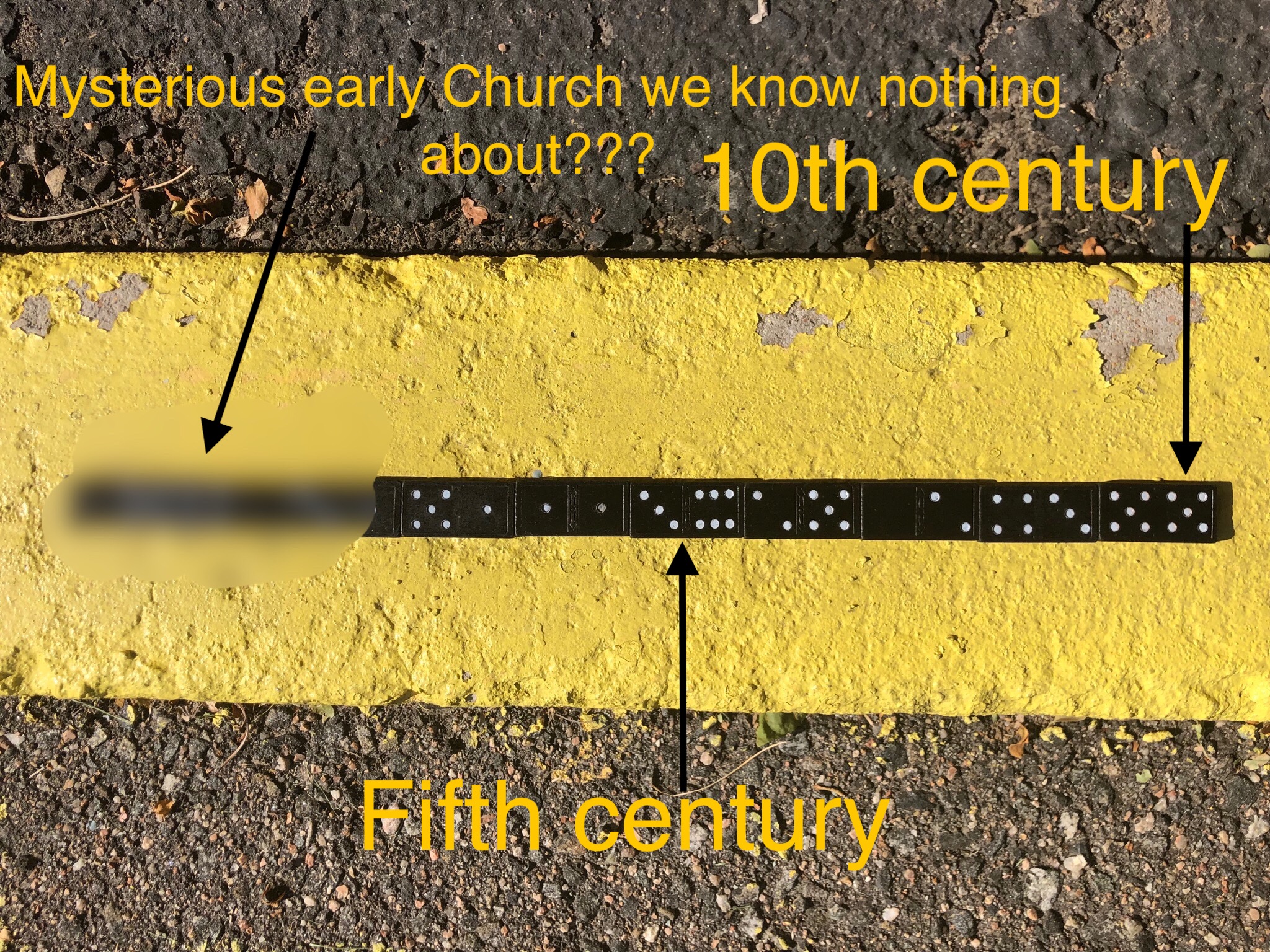
But the real truth is this: Do we have any reason to believe that the blurred area of the first century and second century honestly diverts from the next ten centuries in matters of liturgy, dogma and discipline?
If you divert from Apostolic teaching on any of the above random ten issues I chose, and/or if you claim that those of us who still hold to the ten Apostolic disciplines (found in 19 centuries) are “in schism” then please realize that such is the arrogance found in almost all followers of Arius in the 4th century. The very simple truth is this: One can’t be in schism for holding to the Apostolic same faith that was found in every century for 19 straight dominos when one goes wonky! And yes, the Arian heretics also had the support of 99% of the hierarchy, and possibly the Pope. But God’s truth does not change, “for I the Lord do not change.”—Mal 3:6.
Again, I admit that the early Catholic Christians were the most loving and charismatic group of Catholics that ever existed. That is absolutely clear in Acts of the Apostles. But please also realize some other important realities about the early Church: To be an adult baptized at Easter, you had to fast for 40 days and go through exorcisms. (The medieval Church was never so rigorous.) If you missed Sunday Mass without good reason in the early Catholic Church, you were kicked out of the Christian community and not welcomed back. (The medieval Church was never so rigorous.) For the first few hundred years of Catholicism, if you committed a mortal sin after baptism, you were allowed only one confession for the rest of your life. (This changed around the time of St. Ambrose, but the medieval Church was never so rigorous.)
Thus, the proponents of modernism who have claimed that 1960 brought us back to the early Church ignore the fact that every domino followed backwards suggests no diversion in the early Church except for this: It was exponentially more difficult to be a Catholic in the 2nd century than, say, the 12th century. (So, if you in the group that says “traditionalists want to bring us back to the 1950s, but I want to bring us back to the 50s,” then I say: Go for it! Just realize that you’ll be taking on a “jansenism” worse than anything you’ll find at an ICK or FSSP or even SSPX parish in 2019.)
Liturgy
Different groups of Catholics now admit that the Traditional Latin Mass of today certainly must look similar to the Mass of the 10th century or 13th century or 17th century. But, they insist, we can not know what the Mass looked like in the first 300 years. Thus, it must look like the Novus Ordo. Again, I find this argument very much like Mormon fabricated idea of the “Great Apostasy.” The liturgical great apostasy goes something like this: Because we don’t have much proof of early Christian life, it must be different from what the middle 1800 years of Christianity looked like.
So, how can I disprove a non-disprovable thesis?
Rather, the onus of proof is upon those who believe that the Holy Spirit randomly inspired a different liturgy (or dogma or lifestyle) among Christians in Rome in the year 200 than, say, Christians in Rome in the year 700. Or 1200. Or 1800. Those who insist there was a justice based-consistency in the dark Middle-Ages until we magically discovered the frivolity of the early Church in the year 1969 must study a visual like the dominos to realize that the Holy Spirit is active in every age. And if there is a pan-diversion from Divine Revelation, then such is an age of a crisis, not of a new inspiration. (And, no, God has not abandoned His Church today, but He is punishing her by letting the human aspect of the Catholic Church run amuck in making up her own dogmas and liturgies. Just look at the stats: The USA loses 1 million Catholics every year since the year 2,000…when normally Catholicism grows like wildfire within classic dogma and liturgy.) 2

I believed all through seminary that the Novus Ordo looked more like the Mass of the early Christians. Part of my conviction on this was because we were taught that Eucharistic Prayer II was older than Eucharistic Prayer I. Now I know: Nothing could be farther from the truth. The truth is that the liturgist Bouyer in the 1960s had to rewrite Bugnini’s text of Eucharistic Prayer II in just one evening “on the table of a trattoria in Trastevere”! It was what Cardinal Ratzinger later called “an on-the-spot product” of a Mass invented in the 1960s. (And yes, I believe the Novus Ordo is valid, but the validity is proof of the extreme mercy of God more than inspiration on a table in a restaurant in Rome coming up with new Eucharistic prayers.)
How about the Roman Canon? Although it is true that the Mass was prayed in Greek in Rome at the beginning of the Church, Latin was soon introduced to the Mass between 360AD and 382AD. However, I believe this early Mass was the same Roman Canon (in Greek, with new martyrs being added slowly) and that it was originally transmitted by St. Peter and St. Paul themselves. The third-century translation of the Canon from Greek to Latin “took place over a period of about 120 years, during which time the Greek used in the Mass ceased to be generally understood.” 3 In other words, the early Roman Catholic Church was very careful, slow and conservative in translating the Roman Canon from Greek to Latin. They were so conservative that this translation took 120 years! Compare this to the modern translations of the Mass that are rapidly done by a lay committee with a political agenda under a conference of bishops.
If we believe that Apostolic Succession is more efficacious than the game of “telephone,” then we have to believe that the Mass of St. Peter and St. Paul was not radically different from the Traditional Latin Mass. (Again, follow the dominos backwards, not forwards in this case.) In his book, the Spirit of the Liturgy, Pope Benedict XVI wrote that worship facing the people was absent in Apostolic times. The early Church, he insists, all worshipped ad orientem. In fact, Pope Benedict XVI says that the Mass versus populum is a very new idea!That Jesus Christ taught an ad orientem Liturgy to all His Apostles is also evidenced by the fact that the Divine Liturgy of all 23 Eastern Catholic Churches worship ad orientem.
Finally, the norm for 2000 years in the Roman Church and all 23 Eastern Churches is the reception of Holy Communion on the tongue after sacramental confession. Of course, there’s a modern myth that St. Basil promoted lay people receiving Holy Communion in the hand, but that myth is pretty well disproved here. Also, I very much admit that the early Christians worshipped in tongues in paraliturgical services in the catacombs, but I doubt this was common at the Mass. 4
For several years after my conversion to Catholicism, I was still actually making fun of the Traditional Latin Mass (God forgive me) because I did not understand Church history. The 20th century (represented in the 3-0 domino below) looks pretty straight when you are only looking at it alone, and imposing it on the early Church for convenience. But it is not alone and it is not straight with history, as you can see the straight 19th century (the 6-0 domino) nearby. Obviously, the 19th century is at a different angle from the 20th century, just as Arianism in the 4th century was different from the early Christians in the 3rd century who believed in the Divinity of Christ. To understand the basics of how the Holy Spirit functions in history and in crises, we may need a visual to see what it looks like to have 19 dominos in one direction versus one domino in another direction.
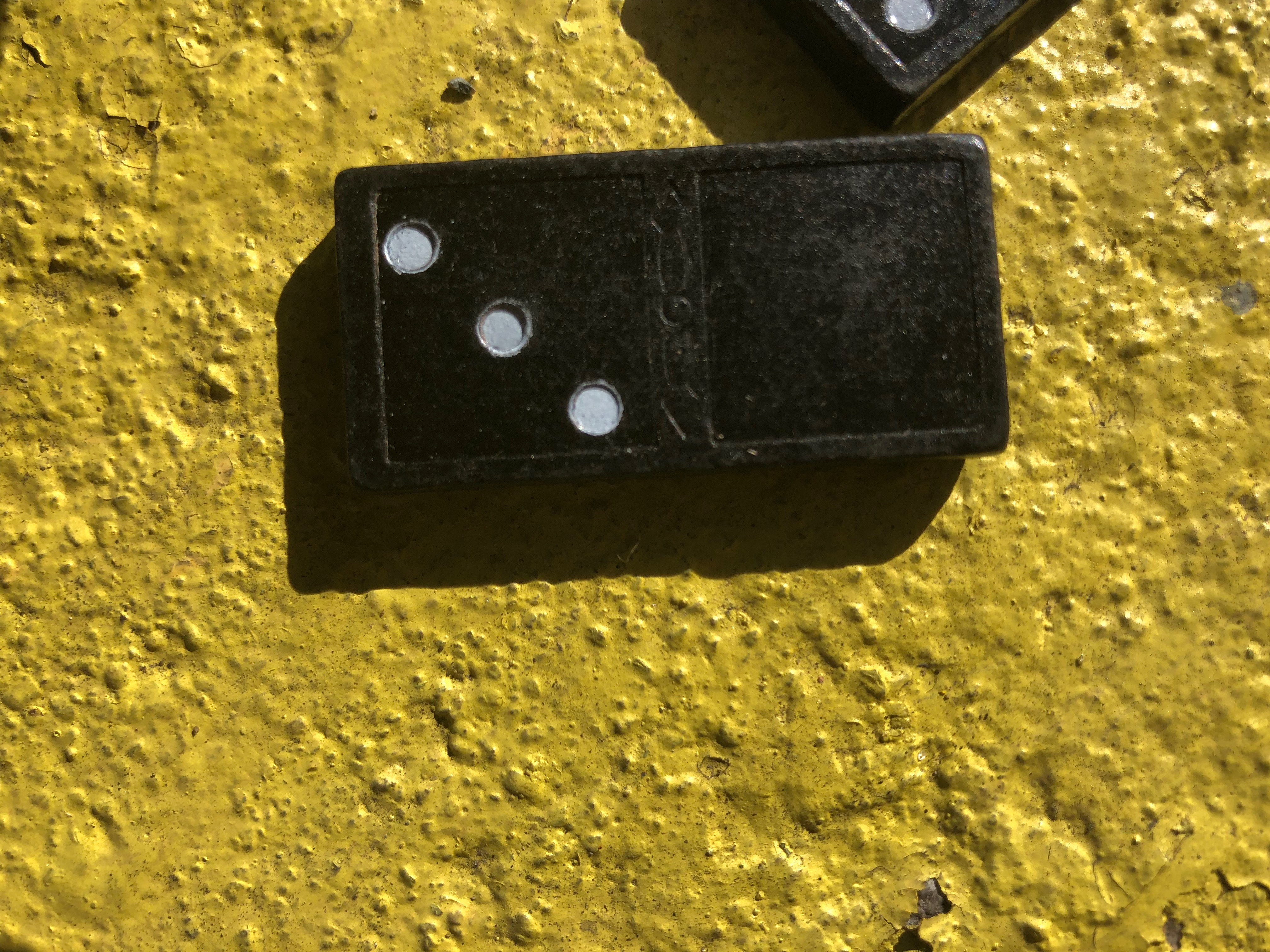
Who’s to say which domino is “straight”? Answer: The domino that lines up with the other 18 dominos before it.
It is precisely because God straightened out the Arian crisis that we have very good reason to believe that God will straighten out that last domino above, that is, this 20th century of errors (dogmatic, liturgical and disciplinary.) We can draw a straight line of dominos back to the early Church with confidence that the 10th century was the same as 5th century was the same as the 1st century. The Holy Spirit keeps everything in a straight line (with new charisms and new saints and new joys, and even minor extrapolations on old dogma and liturgy to be sure…but never before with new dogmas and new liturgies.) So, when we have the two great “innovating” crises of the Church (the two askew dominos in Arianism and Modernism) then we can still say of the Holy Spirit how “incomprehensible are His judgments, and how unsearchable His ways!” (Rom 11:33) knowing He will bring good out of evil. But perhaps that “good” will simply be the perseverance of the few orthodox Catholics who resist modernism, even as we are called “crazy” and “schismatic” by modernists. (Don’t worry, the Arians probably used the same terms against St. Athanasius and St. Hilary.)
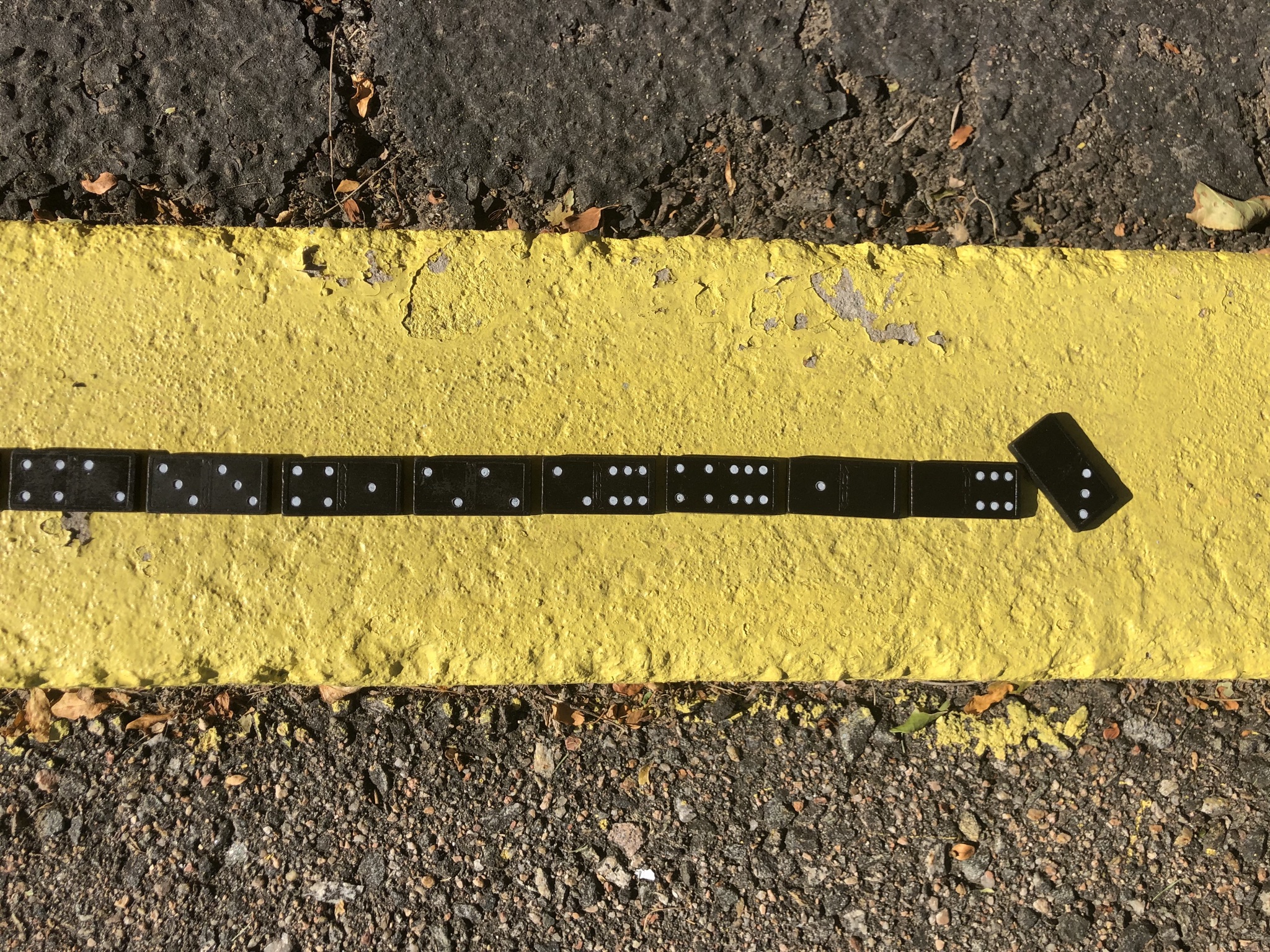
So, get on the right team if you want to go to heaven. God is not going to respect consciences just because everyone thinks it’s true. The Arians had the support of all their bishops, and yet the lay people may have still gone to hell for denying the Divinity of Christ. So also, God may expect you do to a little research on Church history and not go with the crowd on the above 10 issues or a hundred other ways we’re different from the Church of every century except our own. Remember: Our Lady of Good Success said in the 16th century that the 20th century would be a time of “paralysis” under the heretics of the Church. But then “will the Church, joyful and triumphant like a young girl, reawaken and be comfortably cradled in the arms of my most dear and elect Son.” But what if we die before that happens? Can we claim ignorance when we have 19 dominos pointing in a straight line different from all Catholics today?
The good news of the blog post is this: If you’re scandalized by what you’re seeing around you with sex-scandals and money-scandals and liturgy-scandals, realize that this is not the fruit of true Catholicism. Yes, there have always been problems in Church history, but what you’re seeing around you is one of two of the greatest crises in the Church. God got the first crisis straightened out, and He will straighten this one, too, (unless Christ first returns in glory.) Until then, remember the dominos, especially that every saint sounds the same on hell and judgment from 33AD to 1950AD (including St. Francis of Assisi.)
Thankfully, we will see that the “restoration” of the Catholic Church is not unlike the Council of Nicaea that restored the understanding of the Divinity of Christ to everyone’s minds. Even if you don’t believe in Our Lady of Good Success (a Vatican approved apparition) we still have visual proof of 19 straight centuries that God has not changed his mind on liturgy or dogma. A straight line of “dominos” is true to Christ, even if 99% of the world’s Catholics goes “crooked” with most of the hierarchy. God will draw straight with crooked lines and then He will “make all things new” (Apo 21:5)
